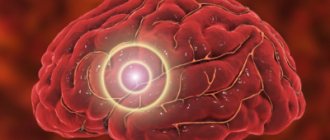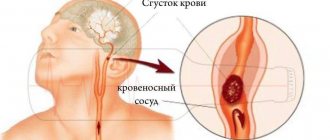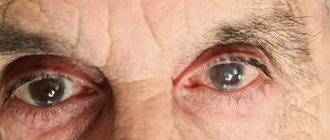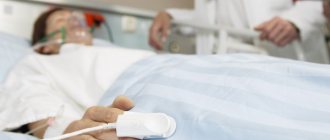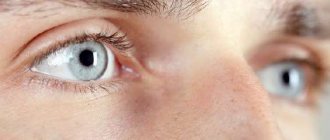Many people who have suffered a brain stroke are afraid whether they will be allowed to drive again or work as drivers. Indeed, even after full rehabilitation, many patients remain with various disorders of greater or lesser severity. Let’s figure out whether it’s possible to drive a car after a stroke, what restrictions and risks exist.
Types of blood flow disorders
There are two types of stroke: ischemic and hemorrhagic.
An ischemic stroke occurs when a blood clot or thrombus closes a hole in a vessel.
Because of this, any part of the brain does not receive oxygen and useful substances that come with the blood, which in turn leads to dysfunction and death of its cells.
A hemorrhagic stroke is a rupture of a blood vessel in the brain, causing a specific area to fill with blood. This phenomenon negatively affects the functioning of nerve fibers, causing their dysfunction.
Consequences of a stroke
A stroke, as already mentioned, does not go unnoticed for anyone and has many consequences. They may appear as follows:
- motor skills and coordination of movements are impaired - this is a sign of a damaged cerebellum;
- one half of the body is paralyzed, including the limbs and facial muscles;
- the functioning of the sense organs is disrupted - a person ceases to distinguish tastes, smells, some shades of colors, sensitivity to temperatures is dulled;
- vision becomes dulled - its sharpness is lost, objects and figures double and blur, the world around ceases to be clear, the field of view narrows;
- some psychological problems appear - depression, attacks of aggression, increased irritability, sudden mood swings, anxiety and insomnia;
- problems arise with the formation and perception of speech - a person not only cannot correctly put sounds into words, but is also not always able to understand the words of the interlocutor;
- urinary and fecal incontinence is observed;
- disability, inability to work, is assigned.
The worst, sad consequence of a stroke is death. This can happen if a large part of the brain has been damaged or if medical care was not provided in a timely manner.
Driving tests
After a stroke, a person is suspended from driving a vehicle for a period of six months to three years, depending on the severity of the disorders in the body.
After this period, the medical commission makes a decision on the current condition and his ability to drive the car.
For this purpose, special driving tests are carried out, with the help of which it is possible to determine whether driving skills have been lost and whether he can behave adequately on the road. Such testing is as follows:
- testing visual recognition and knowledge of the meaning of road signs - first of all, the speed of visual perception of the sign is checked, as well as the speed of recognizing the meaning;
- level of orientation in the surrounding space - here visual perception and the ability to coordinate one’s actions in changing conditions are tested;
- the ability to independently plot a route on the road - this will allow one to draw a conclusion about the person’s adequate thinking, his ability to think rationally and determine the driver’s level of attentiveness.
The test can be completed in 15-20 minutes right in your doctor's office. Passing gives an 85% guarantee of a person’s readiness to drive a vehicle.
Previously, such research was carried out at a special training ground while driving a car and in the company of an instructor. In fact, it was almost the same test as when obtaining a primary license to drive a car.
Such testing has two significant drawbacks: the high cost of the test and the time spent on it (about 45-80 minutes).
Best answers
Garlic:
I knew one core patient who went with group 2, but now he is no longer alive. if honey If you pass the commission, it means it’s allowed!!!
Svetlana:
and where is it written that NO!?
Vasily Shkuro:
everything is individual.
What_is_the_name_of_the_Country_for_Russians?:
You can drive a car only if you are in good health and well-being. In the event of an accident, an excuse such as I have a stroke will be regarded as an aggravating circumstance against the stroke victim
Like with a drunk driver: it doesn’t matter who is at fault for the accident, the drunk is found guilty
lex:
look at the condition. but it's better to refrain
Aurita...:
We have one guy who even works as a taxi driver for more than a year and was bedridden after a stroke.
Sailor:
I would look at that stroke patient who got behind the wheel when he couldn’t even hold a spoon or go to the toilet without help. It all depends on the form and severity of the disease, as well as further rehabilitation. I know people who have successfully recovered from a stroke and can easily drive without problems, not only around the city but also over long distances of 3-4 thousand km. But I also know people who have not been able to get up for 15 years and live like a plant.
steeplejack:
On the one hand, based on how I feel. On the other hand, a stroke is a headache. And after a stroke, stressful situations that constantly arise on the road, often unexpectedly, are strictly contraindicated. There is a danger of pressure surges and recurrent stroke. Which is dangerous both for the driver himself and for those around him. And one more thing - often after a stroke there is a speech disorder - and in the case of a check on the road, incoherent speech and, possibly, a slow reaction, are in no way a plus for the driver. So think about it. In any case, you first need to recover to the maximum. And this process is not quick.
sery5305:
Everyone's body is different! Honestly, it’s hard to put yourself in another person’s shoes! It happens - you talk to a drunken man, and after a few minutes he jumps into the car and drives off! Then, when we meet, you ask, “Where, why? “But he doesn’t even remember! Pure insanity!! ! Surely a patient can also pass out? ! Even though I didn’t want it!!!
Why is it not allowed to travel?
Even after successfully passing driver's tests, a driver may be found incompetent to operate a vehicle.
There may be a number of reasons for this:
- ambiguity, confusion of thinking;
- slow response to unexpected situations;
- inability to correctly assess the situation on the road;
- narrowing of the visual field;
- difficulty stopping the vehicle.
All these factors can cause an emergency on the road, putting at risk the lives of not only the sick person, but also other road users. Deterioration of visual vision is especially dangerous - if the visual system is severely impaired, driving a car is strictly prohibited.
Stressful situations on the road can create a repeated attack of impaired blood flow to the brain. After a hemorrhagic stroke, the recovery process is more difficult and slower, so doctors rarely allow such people to drive a car.
Some motorists do not pay attention to medical warnings and get behind the wheel without permission without proper examination and testing. This can cause a repeated attack due to panic and stress, and a delayed reaction can provoke an accident on the road, sometimes with irreparable consequences.
According to statistics, every second person after a stroke makes mistakes when driving around turns and road intersections. Even people who had suffered a mild form of stroke could not control the car and often did not notice the road surface markings. Also, problems with the speech apparatus will certainly cause a conflict with law enforcement officers.
From everything that has been said, we can conclude that there is no need to rush behind the wheel, so as not to put your health or the health and lives of the people around you at risk.
Rehabilitation after a stroke of any severity occurs slowly and gradually.
No doctor will allow his patient to freely drive a car in record time after an attack.
To do this, it is necessary not only to restore the necessary body systems and pass the appropriate tests, but also to gain confidence in your actions on the road.
Source: neuro-logia.ru
Reasons for receiving a driving ban
After medical staff remove the first signs of a stroke and normalize the patient’s condition, they warn him about the possible consequences that may arise as a result of brain damage. In addition, it is very important to be prepared for the fact that the stress that occurs when driving a car can affect the occurrence of a recurrent attack. It should also be taken into account that it is much more difficult to recover after a hemorrhagic stroke than after an ischemic one.
You can drive behind the wheel after mild and minor brain damage for at least three months. In the United States of America, there is no clear rule for how much time has passed since an illness. At the same time, in the UK and Canada, according to legislation, the ban on driving after a stroke is only one month. At the same time, working as a driver is most often strictly prohibited, especially for patients with symptoms of transient ischemic attacks. In this case, a repeated attack can happen at any time.
It is worth remembering that stressful situations, random panic, as well as overexcitement, can seriously affect the increase in blood pressure. It is this pathology that can affect the occurrence of a stroke, that is, the fact that blood begins to flow from the vessels in the head, filling the cranium. As a result, not only an emergency situation may arise, but also a real traffic accident. In addition, even slurred speech in some cases can affect the occurrence of problems on the road. First of all, this concerns communication with police officers.
Canadian scientists have received statistics that in 35 percent of cases, patients with mild stroke ignore doctors' recommendations. The reliability of the information received can be determined according to the following factors:
- For statistics, data on ten sick patients and ten healthy people were used. All subjects have sufficient driving experience.
- Testing took place in a special area in a created simulator. It had both conditions with the presence of transport and highways without cars.
- The results showed that people who had had a stroke made twice as many errors. This primarily concerned corners or any other various elements of driving.
In patients with the consequences of hemorrhagic strokes, the errors were more serious, which is why they found themselves in difficult situations that could even lead to death. That is why there is no need to rush to get behind the wheel of a vehicle again after any pathologies associated with the brain.
Visual impairment after stroke and driving
A fairly common consequence of a stroke is pathology of the organ of vision. This significantly disrupts the functioning of many areas of life, including driving a car.
Such disorders may manifest themselves as a narrowing of the visual fields compared to a normally functioning organ. In everyday life and in the absence of other significant complications, this pathology is relatively not severe. However, on the road, where the ability to see the whole picture of events in full, to clearly understand the possibility of negative consequences and the ability to quickly find a way out of any situation is required, narrowing the fields of vision is a serious problem. Under such conditions, a person is not able to normally see the entire range of nearby events, which can cause an emergency situation under these circumstances.
In such cases, a medical commission is assembled, which, in accordance with the procedure established by law, decides on the advisability of the patient being able to drive in accordance with his visual impairment.
There is a possibility of a decrease in visual acuity while maintaining the completeness of the picture or double vision. In case of such violations, you should contact an ophthalmologist, who will determine treatment tactics and also tell you about the potential possibility of driving a car by a person who has suffered such consequences of a stroke.
Difficulty driving a car after a stroke
It is often very difficult for a person who has suffered a stroke to adapt to a new rhythm of life, that is, to rebuild his body in accordance with its current functional capabilities. These difficulties may be associated with vision pathologies, as already noted.
After a stroke, disturbances in the patient's mental or psychoemotional spheres of activity are often observed. Therefore, sudden changes in mood are possible, leading to crisis depressive or euphoric states. There is also difficulty in comprehending the entire situation, that is, a violation of coordinated decision-making and vision of the overall picture of everything that is happening around.
Due to the disorders described above that can occur after the development of a stroke, people who have suffered such a disease will experience some difficulties with driving. In this case, the impossibility of turning the steering wheel to the side or problems with braking are predicted. Therefore, before driving, the patient must be sure that there are no organic residual effects that could arise after a stroke.
How long should you abstain from driving?
According to Russian legislation, you can drive a car after a stroke after 3-6 months, if there are no medical contraindications. The decision on admission is made by a special medical commission that evaluates the person’s general health.
Unfortunately, such verification is not mandatory. Therefore, the patient often decides independently when he can drive. However, this approach is wrong. The patient himself may inadequately assess his condition and deny obvious problems. It is primarily in his interests to undergo a medical examination. If the decision of the medical commission seems biased, it is wise to seek advice from an independent expert.
In our country, a microstroke is not considered a condition requiring removal from driving. However, throughout the world, survivors of a transient ischemic attack (TIA) are advised to refrain from driving for 2-4 weeks. This precaution is associated with a high risk of developing a recurrent micro-stroke or a full-blown stroke some time after a TIA.
Driving tests
A large number of people, after suffering a stroke, get behind the wheel, despite the warnings of doctors, and sometimes completely neglecting their advice. This is very dangerous, since not only your own well-being is damaged, but also the health, and sometimes even the lives of other road users. In this case, it is recommended to undergo a specialized test that will help determine the level of functional impairment of the patient and the potential ability of such a person to drive a car.
The main disadvantage of this test is the high price and relatively long completion time. The pricing policy is due to the lack of government programs that would finance such expenses. Therefore, such patients must undergo tests of a similar plan at their own expense. The duration of the procedure (about 45 minutes) is determined by the need for completeness of these studies. Such testing is carried out without leaving the car with the help of traffic inspectors.
Here you will find out whether you can work after a stroke
And in this article we will tell you whether it is possible to fly after a stroke https://insult-med.com/posle/mozhno-li/mozhno-li-letat-posle-insulta.html
There is also a test developed at the Catholic University by Belgian scientists. It provides for outpatient testing without leaving the doctor’s office. The test takes about 15 minutes and consists of recognizing various road signs related to traffic. This tests memory and visual perception of a visual image. It also includes other tasks that help determine the patient's potential ability to drive a car after a stroke.
How is a person's ability to drive a car assessed?
The most common type of testing is a training trip with an instructor. It can take place on a real car or a computer simulator. During the 45-minute ride, the instructor assesses the number of errors, violations, and the adequacy of the decisions made. Based on the results of the race, he draws up his conclusion.
An alternative option is a test proposed by Belgian scientists. It takes much less time (15 minutes) and is performed in the doctor's office. During testing, the patient is offered tasks to:
- recognition of road signs, markings. Helps assess knowledge of traffic rules, correctness of reaction in specific road conditions;
- orientation, speed of perception, decision making;
- route planning;
- visual assessment of space;
- visuomotor tracking.
The test results allow us to weed out 80-85% of unreliable drivers.
When is it better to stop driving?
After a stroke occurs and you undergo rehabilitation therapy, you need to undergo specialized tests before driving a car. In this case, you need to consult your doctor and take into account his advice regarding further actions.
Even if you can't control the vehicle, you don't have to be disappointed. Perhaps over time, when motor functions are restored, the doctors’ verdict will change. In this case, it is necessary from time to time to undergo additional examinations and tests that would determine the functional state of the affected organism.
Source: insult-med.com
Types of circulatory disorders
Normal blood circulation in humans
In medicine, there are two types of stroke. Each of them has its own causes and characteristic features.
The ischemic type occurs due to the closure of the lumen of the vessels by a thrombus or blood clots. As a result, a certain area of the brain ceases to receive a sufficient amount of oxygen and microelements supplied through the bloodstream. This entails dysfunction and death of tissue cells.
Hemorrhagic stroke occurs due to rupture of blood vessels in the brain. The result is a large amount of blood, which negatively affects the functioning of the nerve fibers. This provokes their dysfunction.
As a result of ischemic and hemorrhagic stroke, tissue cell death and impaired blood circulation to the brain are observed. Against the backdrop of ongoing changes, systems and organs cease to function normally.
Consequences of a stroke
Paralysis of one side of the body
Impaired blood flow can affect either a small part of the brain or a large part of it. But regardless of how serious the violations were, a stroke is accompanied by the following complications:
- Impaired coordination of movements and motor skills. They are observed not only during neurological tests. The symptoms are also noticeable in everyday life. It is difficult for a person to hold small objects or open the front door with a key the first time.
- Paralysis of one side of the body, which is opposite to the affected hemisphere of the brain. The patient's limbs and facial muscles also fail. These signs can be expressed to varying degrees, depending on the volume of the affected areas.
- Neuropathy. Patients cease to distinguish taste, smell and temperature.
- Visual impairment. Patients often complain of a narrowing of the field of view, double vision and decreased visual acuity.
- Mental disorders. Most often, after a stroke, patients experience a depressive state. Mood changes quickly, nervousness, anxiety and aggressiveness appear.
- Aphasia. This is a speech disorder, expressed in difficulty perceiving the words of the interlocutor and difficulty in conversation. A person may not always be able to express themselves clearly or absorb large amounts of information.
- Violation of urodynamic functions. There is difficulty urinating and defecating. In some cases, fecal and urinary incontinence occurs.
- Disability. Quite often it becomes one of the consequences of a stroke in which a fairly large area of the brain was affected or in the absence of timely medical care.
A stroke can also be fatal. Many patients who have suffered a mini-stroke have a question about whether it is possible to drive a car while undergoing a rehabilitation course. The ability to drive is determined by a special commission based on the results of examination, testing and medical indicators. The decision is made 3-6 months after the attack.
Consequences of cerebral hemorrhage
There are ischemic and hemorrhagic strokes. The first occurs as a result of sealing the vascular lumen with a blood clot or thrombus. A certain area of the brain does not receive nutrients and oxygen from the blood, which leads to the death of nerve cells and disruption of important body functions.
A hemorrhagic stroke is a rupture of a vessel in the brain, after which a certain area is filled with blood, which puts pressure on the nerve fibers and also causes disruption of brain functions.
The consequences in both cases can be as follows:
Impaired motor skills and loss of coordination. This is often caused by damage to the cerebellum or spinal stroke.
Paralysis of the side of the body opposite the brain hemisphere affected by the stroke. Arms, legs, and facial muscles fail.
Neuropathy, which consists of a violation of the senses - the patient ceases to distinguish smells, tastes, and temperatures.
Visual impairment. It may lose its sharpness, objects in front of the eyes seem to split into two, and the field of view narrows.
Mental disorders. In many cases, people after a stroke suffer from depression, frequent mood swings, nervousness, aggressiveness and anxiety.
Speech impairment - aphasia. The patient cannot speak clearly and has great difficulty perceiving the words of the interlocutor.
Violation of urodynamic function. The patient experiences problems with urination and defecation, and urinary or fecal incontinence occurs.
Disability, inability to work, or death. They often become a consequence of a stroke that affected a large area of the brain, or if medical care was not provided in a timely manner.
In cases where a stroke is defined as a micro-stroke, a small part of the patient’s brain is affected, the chances of successful treatment and recovery are quite high. Violation of body functions is minimal. After completing a rehabilitation course and the conclusion of a special commission, you can drive a car. But this is allowed only after testing. It is absolutely contraindicated to drive a car or work as a driver after paralysis, in case of muscle spasms or epilepsy.
Driving tests
Driving tests
A large number of patients after a stroke get behind the wheel of personal vehicles without undergoing special tests and examinations. It is quite difficult for them to immediately give up the habit of moving freely and quickly around the city. But at the same time, few people think about the safety of themselves and the people around them when driving.
In order to determine whether the driver's skills have been lost, a person must pass a special test. It is performed on the road in a car with an instructor or using a computer simulator. Disadvantages of this test include high cost and long test completion time. All tasks take from 30 to 45 minutes to complete.
After a stroke, patients should regain full function before undergoing all tests. Only then can the commission assess the condition and issue a permit, which will allow you to return your license and the opportunity to drive again.
Testing objectives are:
- Testing knowledge of traffic rules. The instructor turns his attention to adequate recognition of road signs. This is how they check how well visual perception has been restored after a stroke.
- Establishing spatial orientation. Particular attention is paid to coordinating movements and performing specific actions.
- Establishing the ability to navigate a route without outside help. The instructor thus determines the nature of thinking, consisting of an assessment of attention and the logic of judgments.
The test is a set of specific tasks. It was developed by a Belgian scientist based on more than one and a half thousand medical histories of stroke patients.
Source: NervovNet.com
Tests for renewing your driving license
To begin taking tests after a stroke, a person must first go through a rehabilitation period. After this, a special commission must assess the patient’s condition and give appropriate permission to regain the rights and ability to drive vehicles. After receiving approval from medical professionals, a person can go for tests. They are designed for the following:
- Testing knowledge of traffic rules. First of all, this concerns adequate recognition of signs and response to their instructions. In this way, it is possible to test visual perception after blood damage to the brain due to a stroke.
- Determination of human spatial orientation. This part of the tests assesses visual perception, tests visual acuity, as well as the ability to coordinate movements and specific actions.
- Determining the possibility of independently plotting a given route. In this way, the adequacy of a person’s thinking itself is checked, which consists of the correctness of judgments, as well as an assessment of attentiveness.
The test described above presents several challenges for a recently ill person. Its author is a scientist from Belgium who analyzed about 1.7 thousand case histories of people who had strokes. The test takes only about 15 minutes, which is why a person can quickly resume the right to drive cars. You can even perform tasks directly in the doctor’s office.
The reliability of the test is about 80-85%. This result is due to the fact that the tasks assigned to a person evaluate not only motor skills and vision, but also the person’s thinking itself. This comprehensive approach to assessing the consequences of the disease is very important to pay attention to for all those who want to risk their lives by driving until they fully recover.
Features of driving after an impact
Often after a stroke, the most devastating consequences are observed.
They may be as follows:
- mental disorders;
- paralysis of limbs;
- neuropathy;
- aphasia;
- visual impairment;
- lack of coordination of movements;
- disability.
After a stroke, the patient faces a long course of rehabilitation. If he wants to get behind the wheel again, he will have to undergo an examination, based on the results of which doctors will determine his ability to drive a vehicle.
The question of whether it is possible to return to driving a car cannot be given a definite answer. It all depends on the specific clinical case and the severity of the disease.
Reference! It is strictly forbidden to drive if you have epilepsy and numbness of the limbs.
When driving, normal vision is an important factor. Similar problems are recorded in 30% of post-stroke patients. Of course, over time, visual function is restored, but this happens if only a small part of the brain is affected. When its size is impressive, then the loss of this key function is possible.
The patient may be diagnosed with the following problems:
- lack of peripheral vision;
- loss of visual fields;
- optic nerve palsy;
- complete or partial absence of lateral vision.
Thus, only a doctor can determine whether a person will drive and what the consequences of driving are for the patient. Do not neglect the recommendations of your doctor to prevent relapse of this disease.
Return to driving: is it possible?
Having a stroke is not a contraindication to driving. Only violations that persist after the end of the rehabilitation period are significant. If they do not affect a person’s ability to drive a vehicle, then after passing a medical examination you can get behind the wheel.
Absolute contraindications to driving (1):
- mental disorders: delirium, mood swings, neuroses, personality disorders, mental retardation, hallucinations;
- post-stroke epilepsy;
- double-sided blindness;
- double vision as a result of strabismus;
- trembling of the pupil (nystagmus);
- limitation of the field of view by more than 20 0;
- deformation of both hands;
- chronic dizziness.
There are a number of cases when driving a car is not contraindicated for a person, provided he chooses a vehicle that compensates for the deficiency of certain functions:
- in case of foot deformity, paralysis, leg paresis, the machine must be equipped with manual control;
- people with deformation of one hand, immobility of 2 or more fingers of the right hand, 3 or more fingers of the left hand, inability to fully adduct at least one finger, or hemiplegia are allowed to drive a car exclusively with an automatic transmission.
When can you drive?
A post-stroke patient can drive a car after full recovery .
This period is different for each person.
Everything is agreed upon with the attending physician.
The length of the wait depends primarily on the severity of the stroke and the rate of improvement in your general health.
You can drive again only after completing tests on a stimulant and passing a medical commission.
To determine whether a person still has driving skills, it is necessary to pass a specially designed test. It is performed directly in the car in the presence of an instructor or using a computer stimulator. This type of research has disadvantages:
- high price;
- duration of all tasks (about 45 minutes).
Important! Before starting tests, it is necessary to fully restore all lost abilities. Only then will the commission issue permission to return the driver's license.
Testing objectives:
- checking existing knowledge of traffic rules. The instructor, located next to the driver, will determine how adequately he pays attention to the signs and recognizes them. This is how the restoration of visual perception is tested;
- identification of spatial orientation. Here attention will be paid to the correct execution of specific actions and coordination of movements;
- Determining the possibility of making your own route without any help. Here it is important to assess the nature of the post-stroke patient’s thinking, his logic of thoughts and judgments.
A test is a set of specific actions and tasks. Its author is a Belgian scientist who previously studied over 1.5 thousand case histories of post-stroke patients.
People who return to riding after a stroke usually report that the process is difficult and time-consuming. At first it’s almost impossible to get ready, it’s difficult to switch attention. Subjective sensations indicate that the driver has only a third of his previous skills, so he has to learn everything all over again.
First, experts advise driving on less busy roads where there is no active traffic. It is advisable that the speeds be low; you cannot be distracted by conversations. The steering wheel must be held exclusively with both hands.
Problems that the patient may encounter
If the rehabilitation course is successful, the patient may not always be able to drive a car again.
This is hindered by the following problems:
- difficulty in assessing the situation on the road;
- lack of clarity of thinking;
- difficulties with timely braking;
- complications of actions and poor reactions;
- narrowed visual field.
Relevant factors negatively affect human behavior while driving. Such a driver poses a risk to other motorists. He himself may get injured.
Important! Categorical indicators for resumption of driving are cognitive impairment and poor visual abilities.
Statistical information suggests that after a stroke, cognitive impairments make themselves known in 70% of cases. We are talking about deterioration:
- attention;
- memory;
- orientation.
It is these violations that cause concern among specialists, so they cannot issue a permit to drive a vehicle.
Real precedent
Specifics of the situation.
One of the organization's employees returned to work after a long period of incapacity. He submitted a certificate to the HR department stating that he had suffered a cardiovascular disease (diagnosed as a stroke). The document also stated that this citizen “needs to limit work associated with physical and psycho-emotional stress for a period of two months.”
Since we are talking about work restrictions, the employer had a completely reasonable question: what kind of restrictions is needed for this employee and whether he can even return to his current position.
Legal analysis of the situation.
The fact is that the presence of restrictions due to the employee’s health is associated with certain legal consequences for the employer, provided for by current legislation.
Yes, Art. 73 of the Labor Code establishes the obligation of the employer, on the basis of a medical report obtained in the manner prescribed by law, to transfer the employee, with his written consent, to a job that is not contraindicated for him for health reasons.
If, in accordance with a medical report, the employee needs a temporary transfer to another job for a period of more than four months or a permanent transfer, then if he refuses the transfer or the employer does not have a suitable job, the employment contract is terminated in accordance with clause 8 of Part 1 of Art. . 77 Labor Code of the Russian Federation.
As you can see, it is mandatory for the employer to comply with the requirements of the medical report received by the employee in the manner prescribed by law.
What is meant by such a medical report is not specified in the Labor Code of the Russian Federation itself. There is a gap in labor legislation, and therefore in practice a number of problems arise in determining what constitutes a medical report that is mandatory for the employer.
In this material, the authors made conclusions based on a systematic interpretation of a number of articles of the Labor Code of the Russian Federation (Articles 73, 77, 213), as well as order of the Ministry of Health and Social Development of the Russian Federation dated August 16, 2004 No. 83 and order of the Ministry of Health and Medical Industry of Russia dated March 14, 1996 No. 90.
Is a certificate from a clinic a medical report that is binding on the employer?
In our opinion, a certificate from a clinic is not a medical report referred to in Art. 73 of the Labor Code of the Russian Federation, since it does not allow the employer to establish exactly what the nature of the restrictions is and in what position the employee will not be exposed to factors contraindicated to him.
For example, the certificate submitted by the employee in the case under consideration does not allow us to assess exactly which loads and to what extent are contraindicated for him. It is unclear, in particular, what is meant by physical activity - heavy lifting or other loads. If physical activity means lifting heavy objects, then it is unclear what the maximum load value is, etc.
It seems that only on the basis of the conclusion of the bureau of medical and social examination or the conclusion of medical organizations licensed to conduct medical examinations of workers, in exceptional cases - on the basis of the conclusion of the occupational pathology center (which establishes the connection between the employee’s illness and his professional activity), will the employer be able to draw a conclusion about the type the nature and scope of restrictions for the employee due to his state of health, as well as take measures provided for by labor legislation for such cases (transfer the employee to a job that is not contraindicated for him or, if certain conditions exist, fire him).
Let us further consider the algorithm of actions of the employer in the presence of information about the restrictions for the employee related to his state of health.
Is it allowed to work as a driver?
A decision on this issue is made by a special commission after a detailed examination and receipt of the results of all tests.
In general, of course, experts recommend changing your profession, because the person behind the wheel is responsible for the lives of passengers.
In addition, recovery from a hemorrhagic type of disease is more difficult.
In fact, you can drive a car in no less than three months. In other countries of the world, the recovery period does not exceed 30 days. It is the doctor who must inform the patient about the dangers of working as a driver after this neurological disease, because it is accompanied by:
- increased blood pressure;
- panic;
- frequent stress.
All these factors are precursors of cerebral hemorrhage. Emergency situations on the roads cannot be ruled out. If, in addition, the driver speaks inarticulately, then conflicts with law enforcement officers may occur.
The conclusions of the medical commission depend on the general health of the patient, the type of neurological disease and the degree of damage. In any case, it must be remembered that a relapse can occur at any time. Older people are at risk.
After a heart attack
After a heart attack, a person recovers from one to several months, it all depends on the severity of the disease, age and concomitant diseases. Of course, after a heart attack you need to avoid unnecessary stress, and driving is a stressful situation, especially in busy traffic. You can get behind the wheel only after a doctor’s conclusion that there are no contraindications to driving. And experts also say that a person should not have fear. If it is present, it is better not to sit down and save yourself from such stress.

